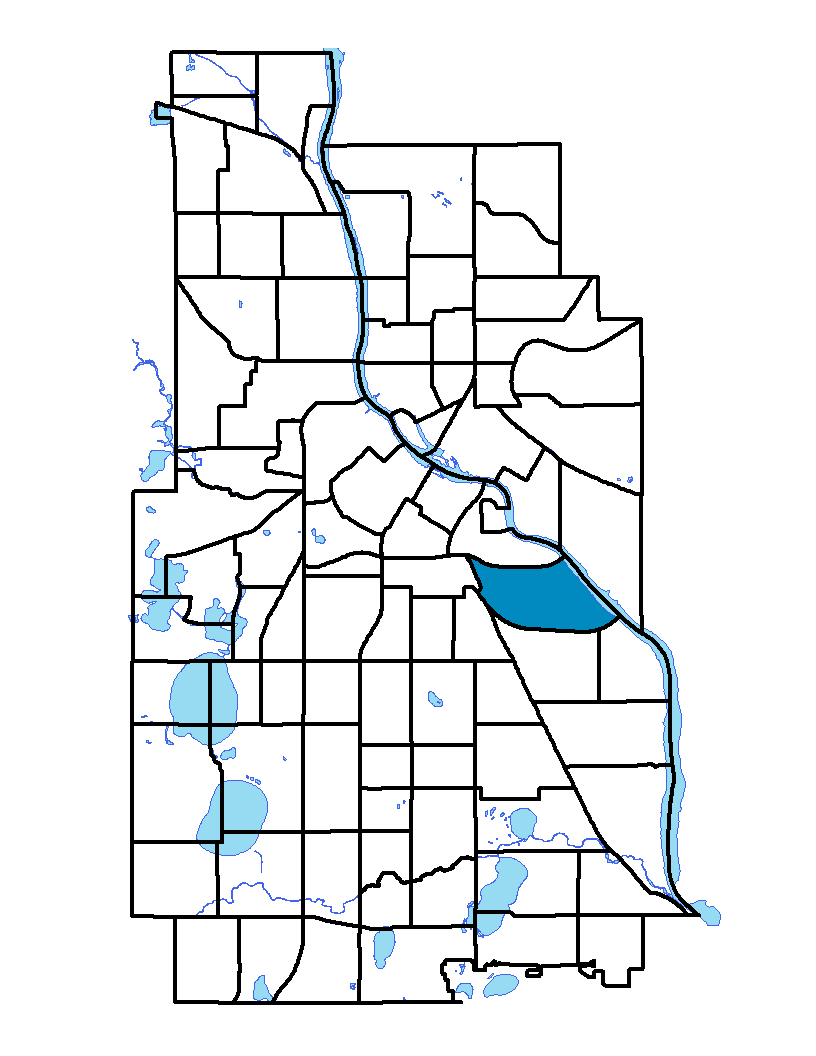Seward, a neighborhood on the western bank of the Mississippi River, is bound on the north by Interstate 94, on the east by the Mississippi River, on the south by 27th Street East and on the west by Hiawatha Avenue. The neighborhood is named for William Seward, secretary of state under Abraham Lincoln. Of the neighborhood's 390 acres, 54 percent are residential and almost 20 percent are industrial. The industrial uses are located along Minnehaha and Snelling avenues and 27th Street East in the southwestern portion of the neighborhood. Parks line the river and Seabury Avenue. A group of rail workers' houses on Milwaukee Avenue built at the end of the 19th century and restored in the late 1970s has National Historic Preservation status and gives character to this neighborhood. Seward is connected to downtown, the airport and the Mall of America through blue light-rail line.
To learn more about the neighborhood association visit: www.sng.org
Indicator Details
| Indicators | Primary Domain | Indicator Value |
Rank |
Tier |
|---|---|---|---|---|
| High School Graduation Rate | Educational Opportunities | -% | - | Data N/A |
| School Readiness Scores | Educational Opportunities | -% | - | Data N/A |
| Food Desert | Neighborhood Characteristics | -% | - | Data N/A |
| Travel Time to Work | Employment Opportunities | 19.9 minutes | 10 | Top |
| Reading Proficiency | Educational Opportunities | 49.4% | 13 | Top |
| Commute Mode Share | Transportation | 42.6% | 13 | Top |
| Walkability | Neighborhood Characteristics | 78 | 20 | Top |
| Household Transportation Costs | Transportation | 15.2% | 20 | Top |
| Business Retention | Economic Health | 4.0% | 23 | Top |
| Low Birth Weight | Health Systems and Public Safety | 5.4% | 25 | Top |
| Voter Participation | Social Cohesion | 34.1% | 26 | Top |
| Preschool Enrollment | Educational Opportunities | 57.0% | 31 | Middle |
| Tree Cover | Natural Areas | 29.6% | 33 | Middle |
| Access to Parks and Open Space | Natural Areas | 7.7% | 34 | Middle |
| Chronic School Absence | Health Systems and Public Safety | 68.2% | 40 | Middle |
| Vacancy Rates | Housing | 7.1% | 41 | Middle |
| Blood Lead Levels in Children | Housing | 4.1% | 42 | Middle |
| Age of Housing | Housing | 88.4% | 50 | Middle |
| Transit Accessibility | Transportation | 277.9 | 51 | Middle |
| Long-Term Unemployment | Employment Opportunities | 6.0% | 51 | Middle |
| Preventable Hospitalizations | Health Systems and Public Safety | 3.1 | 53 | Middle |
| School Proximity to Traffic | Environmental Hazards | 37.5% | 54 | Middle |
| Adult Educational Attainment | Educational Opportunities | 85.4% | 54 | Middle |
| Excessive Housing Cost Burden | Housing | 31.0% | 54 | Middle |
| Residential Mobility | Social Cohesion | 75.6% | 55 | Middle |
| Violent Crime | Health Systems and Public Safety | 60.9 | 57 | Middle |
| Local Business Vitality | Economic Health | 50.3% | 57 | Middle |
| Offsite Alcohol Outlets | Neighborhood Characteristics | 1.8 | 58 | Middle |
| Proximity to Brownfield Sites | Environmental Hazards | 12.9% | 59 | Bottom |
| Access to Mainstream Financial Services | Economic Health | 31.8% | 60 | Bottom |
| Toxic Releases from Facilities | Environmental Hazards | 46.0% | 64 | Bottom |
| Employment Rate | Employment Opportunities | 60.7% | 68 | Bottom |
| Residential Proximity to Traffic | Environmental Hazards | 30.6% | 70 | Bottom |
| Motor Vehicle Collisions | Health Systems and Public Safety | 23.1 | 70 | Bottom |
| Public Assisted Households | Employment Opportunities | 46.7% | 72 | Bottom |
| Pedestrian Connectivity | Transportation | 87.6 | 77 | Bottom |
| Proximity to Superfund Sites | Environmental Hazards | 84.7% | 78 | Bottom |

